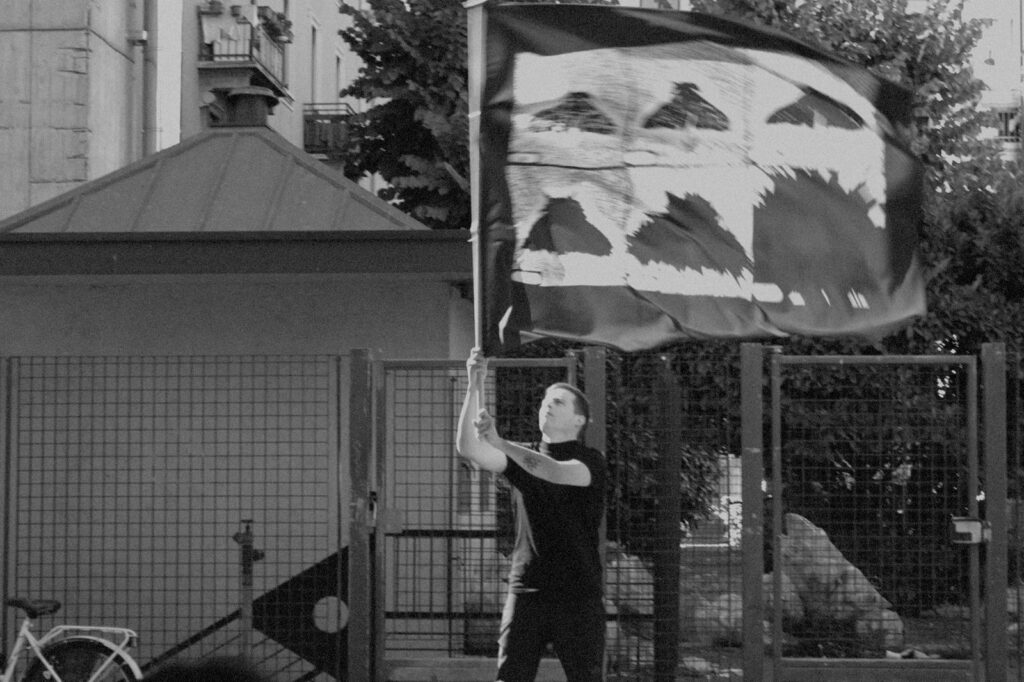2024, Milan, Italy

Biston Betularia is a moth from the Geometridae family, found in Eurasia and North America. In nature, the most common form is typical, characterized by its white coloration, which has evolved to help it camouflage against birch tree trunks, allowing it to evade predators. In 19th-century cities, air pollution caused by industrialization darkened the bark of trees, favoring the survival of the melanistic variant carbonaria, characterized by its black coloration.
Over the following decades, as pollution levels declined, the typical form gradually regained dominance. However, in the near future, increasingly frequent wildfires—driven by climate change—may turn our cities into a new stage for the reappearance of Biston betularia carbonaria, the black moth.
This action includes the public creation of a totem depicting a black moth, the reading of a text, and the waving of a flag. The construction and public activation of the totem serve as an invitation to reflect on how we actively contribute to the emergence of our monsters.


